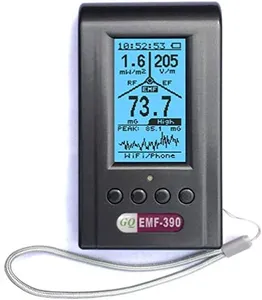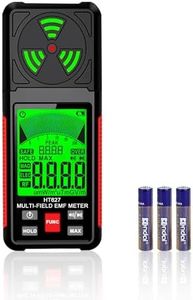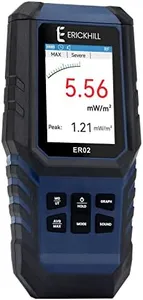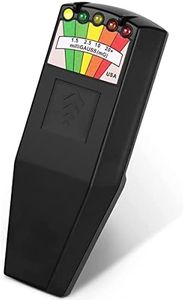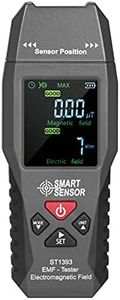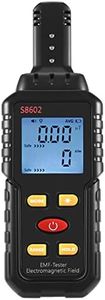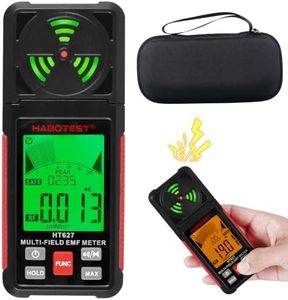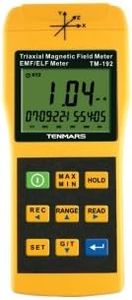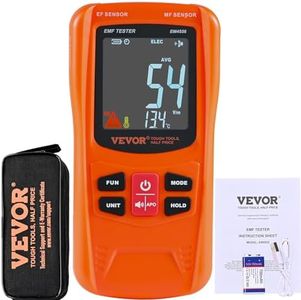We Use CookiesWe use cookies to enhance the security, performance,
functionality and for analytical and promotional activities. By continuing to browse this site you
are agreeing to our privacy policy
10 Best Emf Meters
From leading brands and best sellers available on the web.Buying Guide for the Best Emf Meters
Choosing the right EMF (Electromagnetic Field) meter can seem daunting, but it really comes down to understanding what kinds of EMF you want to measure, and what situation you’ll be using the meter in. Whether you’re concerned about household appliances, Wi-Fi routers, power lines, or simply want to assess your living environment, the best approach is to first identify your primary needs and then look for an EMF meter that can reliably measure what matters most to you.Type of EMF DetectedEMF meters can detect various types of electromagnetic fields: mainly electric fields, magnetic fields, and radiofrequency (RF) fields. This is crucial because different sources emit different kinds of EMF. For example, power lines and appliances typically produce low-frequency electric and magnetic fields, while wireless devices generate RF fields. It's important to pick a meter that matches the EMF type you're interested in. If you want to check both power lines and Wi-Fi, for example, you’ll need a meter that can do both low-frequency and RF measurements.
Measurement RangeThe measurement range refers to the weakest and strongest field strengths the meter can pick up. A wide range allows the meter to detect both subtle and strong EMF emissions, which is useful if you'll be checking different environments. If your main concern is household electronics, a lower range may suffice; but if you are testing near industrial equipment or large power sources, a higher maximum is necessary. Think about what sources you'll be testing and pick a range that covers those scenarios.
Units and DisplayEMF meters display results in different units depending on what they measure, such as milligauss (mG) or microtesla (µT) for magnetic fields, volts per meter (V/m) for electric fields, or microwatts per square meter (µW/m²) for RF. An easy-to-read display that shows the units clearly helps prevent confusion. Some devices allow you to switch between units or display values graphically, which is helpful for beginners and advanced users alike. Consider your comfort level with interpreting results and choose a display style that matches your preference.
Single-axis vs. Tri-axis MeasurementThis spec refers to how the meter detects the magnetic fields. Single-axis meters require you to move and orient the device in different directions to get a complete reading, while tri-axis (or three-axis) meters can detect EMF in all directions simultaneously, providing quicker and more accurate assessments. If ease of use and quick measurements are important, a tri-axis meter is the way to go, but if you prefer a lower-cost device and are comfortable with a bit more effort, single-axis may suffice.
Detection SensitivityDetection sensitivity determines how small of an EMF signal the meter can pick up. Higher sensitivity is important if you're concerned with very low levels of EMF, such as background exposure in your living space. If you only need to detect higher emission sources (like a working appliance), extremely high sensitivity may not be necessary. Match the sensitivity of the meter to the minimum EMF levels you want to monitor.
Additional FeaturesSome EMF meters come with helpful extra features like audio alarms, data logging, or smartphone connectivity. Alarms can quickly alert you to high EMF areas, and data logging is great for tracking changes over time or across locations. Connectivity features can help store and analyze readings more easily. Consider which, if any, of these features would be genuinely useful for your intended use, and look for a model that includes them if necessary.
